
It allows to keep PV going, with more focus towards AI, but keeping be one of the few truly independent places.
-
I just purchazed 5dtoRGB Batch version of the software and wanted to transcode some IPB .MOV files form my GH3 camera. I used Full Range Luminance setting (screenshot attached). However, the resulting file is identical to the original .MOV file. I thought I was supposed to get a "flatter" image with some recovered highlights, perhaps? In fact, I might be wrong, but the resulting file has ever so slightly increased contrast. It's almost imperceptible and I might be wrong. I'll try to add screenshots to this posting.
In any case, I don't see any changes in the new transcoded file.
I also ran some MTS files from my hacked GH2 and the results are there! I get flat image from GH2 files, but not from GH3.
Am I doing something wrong?
Thank you all in advance.
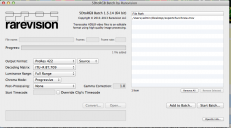
 Screen Shot 2013-07-01 at 11.19.02 AM.png929 x 514 - 110K
Screen Shot 2013-07-01 at 11.19.02 AM.png929 x 514 - 110K -
Have you guys done testing to DPX? I just did a series of tests with my Rokinon 85mm Cine at various ISOs and E/V levels as well as some comparisons of profiles and exported everything through 5DtoRGB out to DPX which was then played back through a high end Christie cinema projector. The export settings were Rec709 Broadcast. Initial observations - nothing I didn't already know. This is with Moon T7. Image detail was very good. Shadow areas were noisy (if cleaned up with Neat Video using a chart on set to create a noise profile, I'm sure this would end up looking very clean), dynamic range is limited as we all know but outside of some extreme DR range I was able to control exposure with ND, and overall the images held up really well projected on 14 ft screen. I was not able to test motion properly as I only have a basic tripod with me at the moment and the head is not fluid enough to do a proper test. I've been watching Alexa footage projected on this same projection system for the past weeks. This is a movie being shot by a Hollywood DP, so naturally the footage looks really great and as expected beats out the GH2 in almost every way. However, I will say that the GH2 holds it's own. The areas where it can't compete are dynamic range, motion, color rendition, and resolution. But the fact that the GH2 looks as good as it does for $800, especially seeing these uncompressed DPX files projected is very cool. I await the BMPCC to compare against the GH2 which is a much fairer comparison. I suspect that camera will replace my GH2 as my compact rig. But I'm not willing to make that claim just yet. Still need to do the tests.
-
wasn't the main purpose of 5DtoRGB to provide a better but slower algorithm to recover 4:2:0 subsampled color to 4:4:4?
Quicktime is optimized for speed, so all video software that uses Quicktime will have this compromise. I tried to find out how big this compromise really is and I have also to say that it is hardly visible at 400%. If I have images with crazy over saturated, sharp edged red and blue image elements or green screen footage, it might make a visible difference ... -
However, some cameras still write data over 235
I suspect the data over 235 levels comes from sharpening which is applied to the file after it has been remapped to 16-235 (the sensor shoots 0-255 but video gets remapped to 16-235 somewhere down the image processing pipeline). I suspect all picture styles are applied in 8bit mode after the file has been remapped to 16-235 ...
Anyway... thanks for posting!
-
GH2 records MTS in broadcast range. I leave the 5DtoRGB setting to Broadcast. No point of altering Luma during the transcoding.
-
I should probably clear up any ambiguity about what 5DtoRGB is doing, so here goes.
ProRes files always use broadcast levels. This is something I have no control over, and are written (and read) that way by the ProRes codec. This is also the correct way to do it, because it keeps compatibility with everything else in the post pipeline.
MTS, MOV or any other file compressed with H.264 are primarily 8 bit. That means they have 0-255 possible values for luminance. This is the case even if the camera shoots "broadcast" levels. If it does, there is still data in the file from 0-15 and 236-255, but it is usually nothing that contains any picture information. That is the way it is supposed to be, anyway. The reality is oftentimes very different.
I'll use the example of a camera that shoots to MTS files. MTS files are typically understood to contain video levels in the 16-235 (broadcast) range. However, some cameras still write data over 235. That's right. Sometimes the camera will write highlight data -- that's real information -- above 235. This data will be clipped in any normal NLE or software that doesn't give the option to transcode full range because it assumes, more or less correctly, that no data exists over 235. This is a fault of the camera, not the NLE. I've seen it happen plenty of times, even with cameras that shoot to MP4 files. That's why I added the option to 5DtoRGB to force the use of the entire 0-255 range. So, even though it's supposed to be that cameras shoot 16-235, they don't always stick to the plan, and clipped highlights are the result. You would never even know this was happening without trying to transcode the clips as full range, because any other piece of software that doesn't allow this (and most don't) would never give you the option.
If you don't notice a "flatter" image after transcoding using the full range setting, this is probably because the source is already full range. In this case, using the broadcast range setting will give a much more contrasty image because 5DtoRGB is only considering the data within 16-235 (it is clipping shadow and highlight detail). This is also why footage that is genuinely broadcast range looks correct when using the broadcast range setting, but looks low-contrast when transcoded as full range (even though there may be some extra highlight detail, so keep that in mind).
I hope that helps!
-
If you need .MOV - what about WinRewrap?
-
5DtoRGB is really only for turning mts files into something we can edit.
Mmmmm, not entirely. Not for me. Not when you're talking CS6. That may be the case for some systems running older software. Working with MTS/MP4 files directly in an editing package is as much or more about software as it is hardware. The same system that chugs trying to do it in CS4 likely works just fine running CS6...but there's the rub: CS6 does a bad job of transcoding the MTS.
Beyond the "digital rain" artifacts produced by the Main Concept libraries, it simply doesn't do as good a job with filtering MTS files for grading.
Granted, this may be also more the fault of the Main Concept libraries and not necessarily Adobe's but I've noticed it in my own footage. I haven't investigated whether they've solved this issue with CC or not.
I keep footage as MTS while editing, because I get great realtime performance. Then when the edit is locked I transcode the appropriate clips and conform for grading.
-
shian my friend, I observe the following behavior while editing high bitrate mov files. In Davinci, the preview window display(in terms of color) is superior in everyway to the preview window in premeire cs 6 and afterfx. The adobe preview while editing always is somewhat washed out. I do this: 1) a cutting edit in premeire 2) export to davinci, color correct in davinci, 3) export to premeire (dnxhd 10bit quicktime, highest quality) 4) and do whatever else there and in afterfx.
The problem is the adobe preview window. I get the coloring I want in davinci, but the adobe preview window after getting the davinci export is often a little washed out. If I was to guess... adobe displays the file in colorspace16-235 whereas davinci does it in 0-255. I can find no way to fix this. When I then render with adobe media encoder, dnxhd 10bit, then the video's color is back to what it was in davinci.
I need everything to match, obviously. I have spyder 4 and monitors are calibrated in gamma 2.2 6500k. What am I missing? Thanks for any help.
-
I dont have the latest Apple computer and I know that h264 files not that friendly toward slower systems. That's why I transcode them to ProRes.
-
More samples...
I was hoping that at least 5dtoRGB wouldn't mess up my footage, but this is really bad.
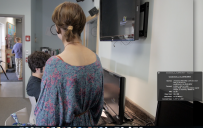
 original_gh3.png1570 x 992 - 2M
original_gh3.png1570 x 992 - 2M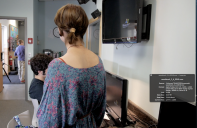
 transcoded_gh3.png1523 x 990 - 2M
transcoded_gh3.png1523 x 990 - 2M -
Something very disconcerting is happening with GH3 footage. I've been transcoding the footage with Broadcast Range thinking that there would be no change, but the resulting footage is a lot more contrasty than the original. This is really bad. Clearly 5dtoRGB is crushing blacks and making the image more contrasty...
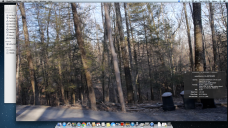
 originalgh3.png1920 x 1080 - 3M
originalgh3.png1920 x 1080 - 3M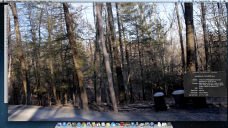
 transcodedgh3.png1920 x 1080 - 3M
transcodedgh3.png1920 x 1080 - 3M -
sigh It's getting to the point where I don't even care anymore. Do whatever the hell you feel like doing. BUT
There is zero difference between 5DtoRGB, 709, "Broadcast" ProRes 422 HQ transcodes and FCP7 and FCPX ProRes 422 HQ transcodes. None.
"Full Range" actually stretches the luma out. But there is zero difference in quality between transcoding full in 5DtoRGB and manually taking footage transcoded at "Broadcast" and stretching the Luma out in post. None. Not on a WFM and not to the eye.
So whether the computer does it, or you do it manually. The result is the same.
Now with 4444 footage I did some serious pixel peeping in my test and could see very slight, and I mean infinitesimal amounts of color distortion on FCP and 5DtoRGB broadcast footage when zoomed at 400% versus when using full range 4444 transcodes which showed no distortion. I was bending the shit out of the image, farther than you ever would in any serious grade to get this distortion, and it is not noticeable to the naked eye at 100%. What you gain from transcoding full @ 4444 vs. broadcast @ 422 is not worth the extra drive space. And between 422 broadcast and Full is not even worth the amount of words I've poured into this post.
In the end - it is all much ado about nothing. Today, I only use 5DtoRGB to transcode when for some reason FCP won't recognize my hacked footage.
-
Everything is Quite confusing :)
this may make things a bit more clear: http://www.belle-nuit.com/test-chart
In addition here's also a chart containing only broadcast safe colors: http://www.file-upload.net/download-7791434/HD_Testchart.tif.html
-
Since I need to match the files I shot on both GH3 and GH2, I opted for transcoding with Broadcast Range. They both look similar to my eye right away. When I transcoded with Full Range, Gh2 files looked "flat" and GH3 files didn't change at all. That would create more work for me in the post since I have to do extra work to math them.
-
Everything is Quite confusing :)
-
So is this statement not true?
No, it's not true... except of the note the cam records broadcast levels.
you can see that full range is actually just lifting your shadows and compressing your highlights. (...) So you are actually baking a shadow lift and highlight compression into your footage
The other way around! The camera records "broadcast safe" 16-235 levels ... so if you want so, it records "lifted" shadows and "compressed" highlights (in fact nothing is lifted or compressed... but it looks flat on a computer screen). So when you set 5DtoRGB to "broadcast" you are baking an expanded luminance range into your footage. "Fullrange" passes the full range of luminance levels contained in the source file into the transcoded footage.
As far as the GH3 goes the QT files contain meta data showing the colors/levels utilized ... the GH2's MTS files do not contain these tags (see attachment).
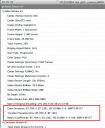
 gh3_qt_info.jpg499 x 608 - 138K
gh3_qt_info.jpg499 x 608 - 138K -
@towi I didn't mean the explanation you gave was absurd, just the fact this can't be decided on, that's all. It wasn't a swipe at you by any means. So is this statement not true?
"if you do a test, which i did earlier in this thread, you can see that full range is actually just lifting your shadows and compressing your highlights. The cam records in broadcast. So you are actually baking a shadow lift and highlight compression into your footage. And 601 does some odd stuff too."
-
well, I did a quick research and found some posts of "shian" on the topic. Since he uses FCP everything is fine with regard to his particular workflow. Nevertheless in 5DtoRGB the setting "broadcast" remaps studioswing to fullswing (16-235 to 0255)... which is a pretty trouble-free workflow for the QT-based FCP applications. However, technically speaking there is a remapping going on ... and this remapping is in 10bit. 5DtoRGBs setting "fullrange" doesn't remap at all. It passes the "full range range of luminance levels contained in the source file" to the outputted file. That's all I am talking about ... And, sorry, this is not "absurd", it's simply what's going on technically ...
-
I have been transcoding my GH2 files as BT.709 "broadcast range" most of the time. So I was basically not gaining but also not losing any information, except for leaving to 5DtoRGB to remap 16-235 to 0-255 in 10bit space.. Is that right?
yes, that's absolutely correct!
In most cases 10bit is totally fine. Really! Only in very rare cases (especially when you lift the shadows in post) it is preferable not to remap in 10bit (through 5DtoRGB) but to preserve the original luminance levels on transcode and then apply a curve in the NLE in 16 (or higher) bit. Since I don't want to dig too deep into the actual footage in my workflow I always transcode/import everything without remapping and apply high bit curves in the NLE afterwards. But this is just a matter of workflow standarization ... which I personally am finding easier to manage.
Howdy, Stranger!
It looks like you're new here. If you want to get involved, click one of these buttons!
Categories
- Topics List23,992
- Blog5,725
- General and News1,354
- Hacks and Patches1,153
- ↳ Top Settings33
- ↳ Beginners256
- ↳ Archives402
- ↳ Hacks News and Development56
- Cameras2,367
- ↳ Panasonic995
- ↳ Canon118
- ↳ Sony156
- ↳ Nikon96
- ↳ Pentax and Samsung70
- ↳ Olympus and Fujifilm101
- ↳ Compacts and Camcorders300
- ↳ Smartphones for video97
- ↳ Pro Video Cameras191
- ↳ BlackMagic and other raw cameras116
- Skill1,960
- ↳ Business and distribution66
- ↳ Preparation, scripts and legal38
- ↳ Art149
- ↳ Import, Convert, Exporting291
- ↳ Editors191
- ↳ Effects and stunts115
- ↳ Color grading197
- ↳ Sound and Music280
- ↳ Lighting96
- ↳ Software and storage tips266
- Gear5,420
- ↳ Filters, Adapters, Matte boxes344
- ↳ Lenses1,582
- ↳ Follow focus and gears93
- ↳ Sound499
- ↳ Lighting gear314
- ↳ Camera movement230
- ↳ Gimbals and copters302
- ↳ Rigs and related stuff273
- ↳ Power solutions83
- ↳ Monitors and viewfinders340
- ↳ Tripods and fluid heads139
- ↳ Storage286
- ↳ Computers and studio gear560
- ↳ VR and 3D248
- Showcase1,859
- Marketplace2,834
- Offtopic1,320
Tags in Topic
- gh3 337
- 5dtorgb 10
- transcoding 1












